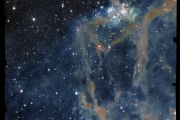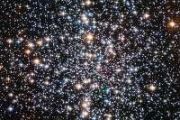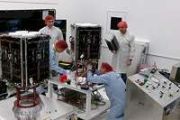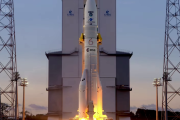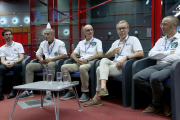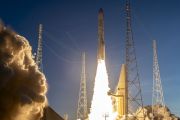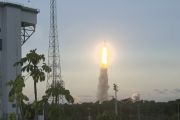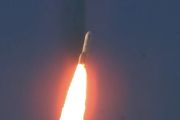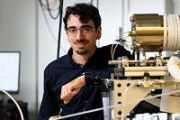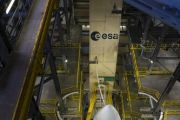
Copernical Team
Early detection methods refine study of stellar explosions
 Supernovae are sudden stellar explosions that flare brightly in the sky, making them difficult to capture in their earliest moments. With modern wide-field, high-cadence sky surveys, astronomers can now spot these events almost daily, but protocols are needed to secure immediate follow-up data.
A pilot study led by Lluis Galbany of the Institute of Space Sciences (ICE-CSIC) in Barcelona te
Supernovae are sudden stellar explosions that flare brightly in the sky, making them difficult to capture in their earliest moments. With modern wide-field, high-cadence sky surveys, astronomers can now spot these events almost daily, but protocols are needed to secure immediate follow-up data.
A pilot study led by Lluis Galbany of the Institute of Space Sciences (ICE-CSIC) in Barcelona te New model shows how collapsing matter and voids shape cosmic evolution
 A University of Queensland researcher has developed a mathematical framework that incorporates collapsing regions of matter and expanding cosmic voids to explain the universe's evolution in greater detail than the standard model allows.
Dr Leonardo Giani and colleagues used data from the Dark Energy Spectroscopic Instrument (DESI), which measures the structure of the universe across distan
A University of Queensland researcher has developed a mathematical framework that incorporates collapsing regions of matter and expanding cosmic voids to explain the universe's evolution in greater detail than the standard model allows.
Dr Leonardo Giani and colleagues used data from the Dark Energy Spectroscopic Instrument (DESI), which measures the structure of the universe across distan Webb telescope discovers a new Uranus moon
 NASA scientists at the Southwest Research Institute discovered a 29th moon orbiting Uranus while using infrared detection through the James Webb Space Telescope.
The discovery was made on Feb. 2, but NASA officials did not announce the discovery until Tuesday in a news release.
"This object was spotted in a series of 10 40-minute long-exposure images captured by the Near-Infrared
NASA scientists at the Southwest Research Institute discovered a 29th moon orbiting Uranus while using infrared detection through the James Webb Space Telescope.
The discovery was made on Feb. 2, but NASA officials did not announce the discovery until Tuesday in a news release.
"This object was spotted in a series of 10 40-minute long-exposure images captured by the Near-Infrared Asteroid family link strengthened by SwRI analysis of Bennu and Ryugu
 A Southwest Research Institute study of near-Earth asteroids Bennu and Ryugu provides compelling evidence that both objects originated from the Polana collisional family in the main asteroid belt between Mars and Jupiter.
The team compared Polana spectroscopy data with spacecraft and laboratory results from Ryugu and Bennu, revealing strong similarities in their near-infrared spectra that
A Southwest Research Institute study of near-Earth asteroids Bennu and Ryugu provides compelling evidence that both objects originated from the Polana collisional family in the main asteroid belt between Mars and Jupiter.
The team compared Polana spectroscopy data with spacecraft and laboratory results from Ryugu and Bennu, revealing strong similarities in their near-infrared spectra that Rotation corrected orbit method promises centimeter level precision for mega constellations
 Precise orbit determination is becoming increasingly critical for satellite navigation, positioning and timing as Low Earth Orbit constellations expand worldwide. Researchers have introduced a new method that combines inter-satellite link data with onboard BeiDou-3 observations to simultaneously resolve LEO and BeiDou-3 Medium Earth Orbit satellite orbits with unprecedented accuracy.
The a
Precise orbit determination is becoming increasingly critical for satellite navigation, positioning and timing as Low Earth Orbit constellations expand worldwide. Researchers have introduced a new method that combines inter-satellite link data with onboard BeiDou-3 observations to simultaneously resolve LEO and BeiDou-3 Medium Earth Orbit satellite orbits with unprecedented accuracy.
The a Rocket Lab Prepares 70th Electron Mission for August Launch
 Rocket Lab has confirmed its 70th Electron launch is set for this weekend, lifting off no earlier than August 23 from Launch Complex 1 in New Zealand. The dedicated mission, named Live Laugh Launch, will deploy five satellites into a 655 km circular Earth orbit for a confidential commercial client.
The flight takes place less than three weeks after the company's previous mission, highlight
Rocket Lab has confirmed its 70th Electron launch is set for this weekend, lifting off no earlier than August 23 from Launch Complex 1 in New Zealand. The dedicated mission, named Live Laugh Launch, will deploy five satellites into a 655 km circular Earth orbit for a confidential commercial client.
The flight takes place less than three weeks after the company's previous mission, highlight SpinLaunch secures 30 million to speed Meridian Space constellation development
 SpinLaunch has closed 30 million in funding to accelerate development and commercialization of Meridian Space, its low-earth orbit satellite broadband constellation. The round includes new capital from existing investors led by ATW Partners, along with the previously announced strategic investment from Kongsberg Defence and Aerospace.
The company is targeting its first customer link in the
SpinLaunch has closed 30 million in funding to accelerate development and commercialization of Meridian Space, its low-earth orbit satellite broadband constellation. The round includes new capital from existing investors led by ATW Partners, along with the previously announced strategic investment from Kongsberg Defence and Aerospace.
The company is targeting its first customer link in the Irish CubeSat proves wave based control for precise in orbit pointing
 EIRSAT-1, Ireland's first satellite, has validated an onboard Wave-Based Control payload that enables accurate attitude control in orbit. Developed at UCD's School of Mechanical and Materials Engineering, the software-led experiment demonstrates advanced manoeuvring techniques on a live spacecraft rather than solely in simulation.
Engineering Manager for EIRSAT-1 and UCD control systems ex
EIRSAT-1, Ireland's first satellite, has validated an onboard Wave-Based Control payload that enables accurate attitude control in orbit. Developed at UCD's School of Mechanical and Materials Engineering, the software-led experiment demonstrates advanced manoeuvring techniques on a live spacecraft rather than solely in simulation.
Engineering Manager for EIRSAT-1 and UCD control systems ex NASA's Webb telescope discovers a new Uranus moon
 NASA scientists at the Southwest Research Institute discovered a 29th moon orbiting Uranus while using infrared detection through the James Webb Space Telescope.
The discovery was made on Feb. 2, but NASA officials did not announce the discovery until Tuesday in a news release.
"This object was spotted in a series of 10 40-minute long-exposure images captured by the Near-Infrared
NASA scientists at the Southwest Research Institute discovered a 29th moon orbiting Uranus while using infrared detection through the James Webb Space Telescope.
The discovery was made on Feb. 2, but NASA officials did not announce the discovery until Tuesday in a news release.
"This object was spotted in a series of 10 40-minute long-exposure images captured by the Near-Infrared Moon flybys could save fuel on interplanetary missions
This request seems a bit unusual, so we need to confirm that you're human. Please press and hold the button until it turns completely green. Thank you for your cooperation!
Press and hold the button
If you believe this is an error, please contact our support team.
185.132.36.159 : 4ec82564-2b28-414f-af86-b6fa132d







